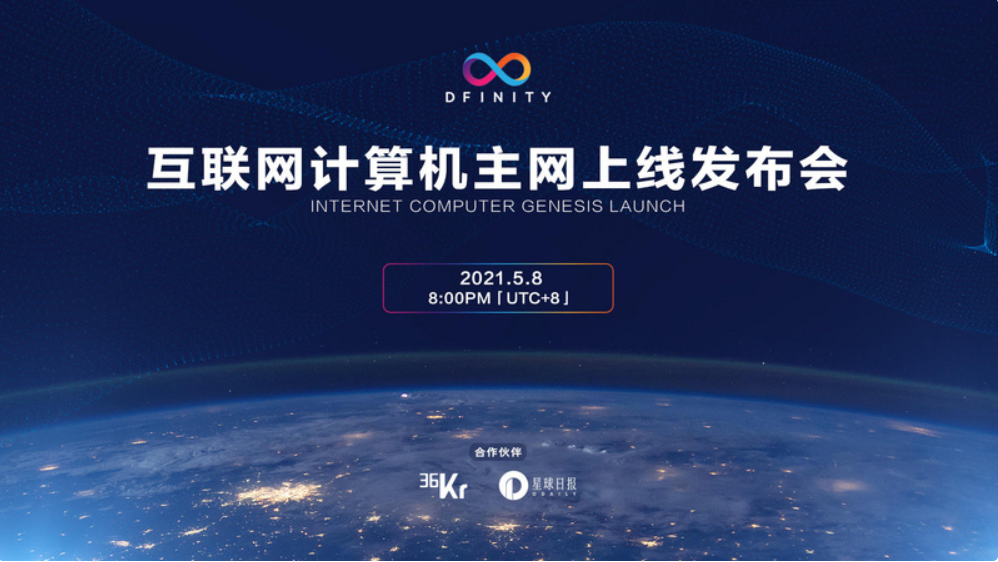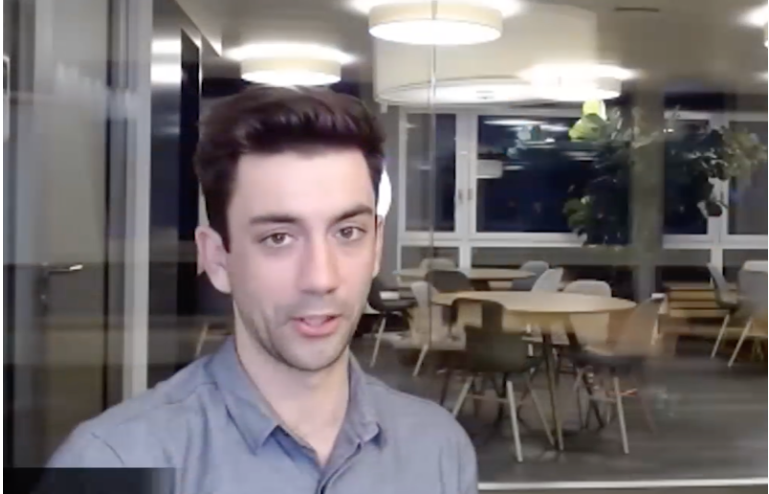
In the speech "Network Nervous System: How to Govern Internet Computers Together", Dfinity founder Dominic Williams invited David Millar-Durrant from Dfinity Foundation to demonstrate how ICP holders can use tokens to participate in automatic network governance.
We know that the Network Nervous System (NNS) built by Dfinity is an advanced adaptive network. In order to better upgrade the network, decentralized governance must be carried out effectively. Since the birth of the blockchain, decentralized governance has always had problems of low participation and insufficient decentralization.
In the presentation, David showed us how Dfinity can increase the participation of token holders through the neuron staking-voting reward system, and more importantly, the automatic follow-up voting mechanism. For every participant and token holder who pays attention to Dfinity, this can also be upgraded from the original pure currency holding model to Play-to-Earn (play while earning), so why not do it? For more details about the Dfinity governance model, please continue to read the full text of the speech organized by Odaily, enjoy~
Dominic Williams:
Hello everyone, we meet again. Next we have a demo of a DAP (Data Acquisition and Processing) running end-to-end from an Internet computer. It helps you manage the network governance token ICP and interact with the Network Nervous System (NNS).
 Dominic in speech
Dominic in speech
The Network Nervous System is a completely open tokenized governance system that runs within the Internet computer blockchain protocol, the network and node machines are run by independent parties and let the network run under the control of the Network Nervous System, which is incredible excited. Internet computers can develop and adapt in real time, and by relying on external chains to apply key technologies to the lower layers of the network, it can launch protocol upgrades to node machines, create new subnet blockchains by merging nodes to increase network capacity, and adjust economic parameters and perform many other tasks, all without disrupting network operations or compromising security.
This is in stark contrast to traditional blockchain networks, which can only convince participants to perform hard forks in highly disruptive and sometimes divisive ways.
After Genesis is unlocked, the network nervous system will process a large number of proposals through algorithmic mediation and execute them automatically. You can create new voting neurons by joining ICP. These neurons are rewarded for voting and can be configured to vote automatically by following other neurons in a liquid democracy system.
Over the next few weeks, we expect thousands of you to create neurons that greatly increase the security of the network, so let's head over to our Zurich office to see how DAP can provide a way to communicate with ICP and the network's nervous system Simple way to interact. Below is a demonstration by David Millar-Durant and engineer Gilbert Jolly from Spain.
David Millar-Durrant: Thank you so much for the introduction, I'm going straight to the point.
 david in speech
david in speech
This app allows you to do everything you want to do with ICP and smart contracts (Canister). When you go to the ICP tab, the ICP is the key to all these operations, as you can see, inside my account, I have 100 ICPs now, and each account has some sub-accounts, you can divide the money into different types, your address is here, you need a nice account name, I'll call this my "holiday fund".
Now I choose this address so that I can show two aspects of the payment system, the first one I want to pay, you choose this target account, choose to create a new transaction, which is to send tokens to this account, and then It is so simple to check the transaction to confirm the sending, and each transaction takes a few seconds to go through a full consensus on the subnet.
Second, if I want to participate in the voting system of the Internet, how should I do it? The first thing you do is start independent staking, so you go in and create a new kind of transaction, which is staking.
I want to stake 30 ICP, because that seems to be my ability. Now the initial neuron is being created here. In the next step, you will decide how long you want to lock the position. The longer the lock-up period, the more rewards you will get for each vote. Now you can see that I have locked the position for less than two years. This seems like a good time frame and as you can see this gives me a higher vote.
What I want to emphasize here is that if you increase your release delay period (also known as "dissolution delay) to 8 years to maximize your voting power and voting rewards, it will take 8 years from the moment you start solving it. years to restore the internal ICP state.
The reason we're doing this is we're trying to get people to invest in the long-term value of Internet computers. We use a form of liquid democracy at Difinity where you can follow other neurons, so you might not want to really actively vote, you might just want to pick people you trust to vote for you on certain topics, in this Situations where I don't really want to vote on government issues, so I automatically find people to follow.
Of course you can also manually enter the following, by selecting the neuron ID you can configure yourself to follow any number of other neurons on a particular topic and it will follow most followers. For example, if you follow the Internet Computing Association and the Dfinity Foundation, then they will have to vote the same way, because it follows the majority vote. Here I want to emphasize that the Dfinity Foundation and the Internet Computing Association neurons are not actually directly controlled by the relevant organizations.
Next let's see what can be done on the neuron side, this is a neuron 90, if you want to give something to the people who follow you, this is the amount you stake, this is the time it is locked, so How soon can you get your money out? If you click start to unlock, that number will gradually decrease to zero until eventually you can get your money back, but there is no way to speed it up.
Next is the maturity period. As long as you vote on the proposal within 3 days after staking, you will enter the maturity period. When this maturity is large enough, you can generate a new neuron, and that neuron is formed by the network and the new neuron. Created by the token, it will reward you in the governance system. Every day, a part of the system reward will be distributed to neuron holders. This part of the reward will also be calculated according to a completely different set of rules. It is based on the relative voting power This portion of the reward is distributed among the voting neurons.
A lot of people including me are thinking, how do I manage my ICP, in my case I will lock a whole bunch of my ICP and neurons, exactly right, if you lock your ICP to 8 Years, you will get the maximum voting rights and the maximum maturity voting rewards. You can then choose who you follow whenever you see fit.
Next let's look at some proposals, because we haven't reached token liquidity yet, this is just a test, and usually you will see a large number of proposals, all kinds.
The one you see now is that it proposes to modify the memory cost of the Internet computer, provided by the Internet computer smart contract, which is a very basic aspect of the entire system, and these super detailed parameters used by the network can be configured through proposals.
We expect hundreds of proposals to pass through the system a week, and most users won't want to vote on them individually, they will probably select a subset of proposals and then configure their neurons to follow the others completely automatically. Here is the voting page, where you can choose topics you are interested in, so some of them are more interesting than others, and it is more exciting for you to check the status of awards.
The proposal just now reflects that hardware prices reduce the cost of smart contract memory by 5%. Occasionally, I see proposals like this on the main network. If we want to reduce costs, I choose to sacrifice my votes. I have 3713 votes. Now I vote for this relatively sensible proposal. As you can see shortly after I voted, a very large following of mine decided to vote with me, and the offer has been overwhelmingly accepted, such is how easy it is to participate in the decision-making process of the Internet's computers.
Back to the previous question. We finished ICP, ORL and voting, and the last question is how do you implement smart contracts on Internet computers, if you also want to participate and want to make some software, then what I will do is make a Canister, brand new, named Catherine, after confirming the name, I'm going to select my ICP source, I select the "Vacation Fund Account" and click publish. In this way, you have a smart contract that belongs to you, and then start to enter a great development experience, which is the network nervous system.
Dominic Williams: Thank you so much, I think this DAP (data acquisition and processing) will provide a very good way for people to participate in the system, we expect billions of dollars of value will be as neurons in the system, not only Governance will be made very secure, and we believe this will ensure that the proposal will drive the success of the internet computer network, which will be the world's first fully adapted blockchain.